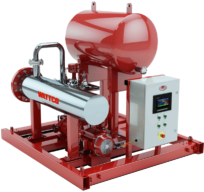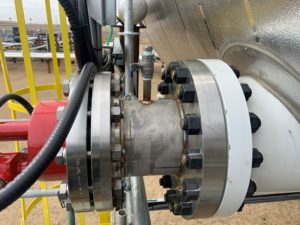Water Heater Maintenance
Last updated on May 2nd, 2022 at 08:51 pm
 Both inline water heaters and immersion water heaters provide core functions in industrial processes. They provide everything from steam generation in power plants to sanitizing pharmaceutical equipment and our foods. Keeping these water heaters in pristine working order is essential for all industries and their consumers.
Both inline water heaters and immersion water heaters provide core functions in industrial processes. They provide everything from steam generation in power plants to sanitizing pharmaceutical equipment and our foods. Keeping these water heaters in pristine working order is essential for all industries and their consumers.
The Importance of Maintenance
The proper maintenance of heating equipment means better products and operational processes. Here we explore three crucial factors that heater maintenance provides for any project.
- Protect Equipment: Regular maintenance reduces the risk of damage or premature failure of equipment. It also enables the early identification of emerging problems like sediment buildup that can be easily (and cheaply) mitigated if caught early. By scheduling regular maintenance, you can avoid unwanted downtime and reduce repair and replacement costs.
- Efficiency: Staying ahead of maintenance keeps your electric water heater operating at peak efficiency. You can avoid blockages causing strain on the system, reducing flow rates, and requiring extra energy to achieve heat. A good water heater maintenance plan keeps operational costs low and productivity up.
- Quality: Without proactive maintenance, product quality becomes inconsistent. Factors like sediment buildup and scaling directly affect heating, energy, and flow. As a result, the final product may be less consistent and of lower quality.
Maintenance Tips
The bulk of maintenance tips extends to all heater types. For example, you should always turn off the power before conducting maintenance, regular scheduling is always important, and there’s always a need for cleaning. Here, however, we explore a few maintenance tips that are especially important for water heaters.
Inspection
During every maintenance, the heater and system require careful inspection of all parts and components. Look for signs of corrosion, physical damage, and sediment. These are easy to manage if caught early. Left unattended, however, they can result in system failure or decreased efficiency.
In addition to the heater, make sure to inspect the drain valve. The valve is essential for maintenance, flow control, and flushing.
Flushing
A hot oil flush is a simple and effective way to clean the system. Water is drained, then the flushing fluid is heated and forced through the system at high velocity. This serves to remove contaminants and sediments to keep the system clear. Fast and easy to perform, this can have long-lasting benefits for your water heater’s longevity and lasting efficiency.
Compressed air flushing is available if hot oil is not appropriate for the application.
Connections
Finally, check all connections during maintenance. Elbows joints, valves, and gaskets are the most common failure points. Ensure they are tight and free from leaks and visible damage.
Benefits of Electric Water Heater for Maintenance
Mounting & Installation
 Electric heaters benefit from having a small size despite their available power output. This gives them all sorts of mounting options. Immersion heaters can be installed out of the way at the bottom or sides of tanks. This leaves room for other operations and maintenance in the tank, so draining and stopping operations is not always necessary.
Electric heaters benefit from having a small size despite their available power output. This gives them all sorts of mounting options. Immersion heaters can be installed out of the way at the bottom or sides of tanks. This leaves room for other operations and maintenance in the tank, so draining and stopping operations is not always necessary.
Skid systems present a flexible option for electric heaters. Over-the-side heaters, for instance, can be easily removed and used in other tanks during maintenance.
As well, the circulation heaters used to heat oil in hot oil flushing can easily be skid-mounted and transported wherever it is needed. It is then easy to move elsewhere to avoid getting in the way of day-to-day operations.
Simple Design
Electric water heaters have a simple design with fewer parts than fossil fuel heaters. This simplicity offers multiple advantages.
For one, this makes cleaning easy. There are fewer places for debris to get stuck, and cleaning can be as simple as power washing. As well, with fewer parts, there is a lower risk of heater failure. That means longer equipment lifespans, predictable performance, and lower repair/replacement costs.
Less Fouling
In contrast to a combustion heater, electric heaters present less risk of fouling. They have much cleaner operations and thus are less prone to contaminating the water. This is essential for clean water but can benefit any water heating application. Fouling reduces control over temperature and flow and may increase energy requirements.
Preventing fouling keeps operational costs lower while delivering a more consistent product.
Electric Water Heater Quotes & Installation
Wattco custom manufactures electric water heaters for industrial use. Each heater is carefully designed with heater type, installation, and materials chosen to match your project’s specific budget and needs.
Contact Wattco today for electric water heater quotes and information.
